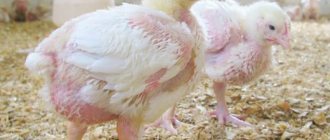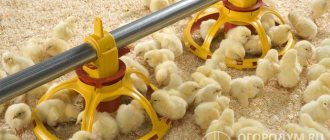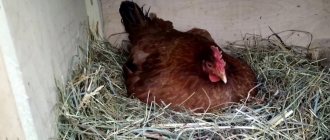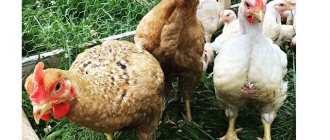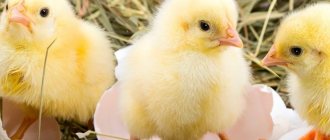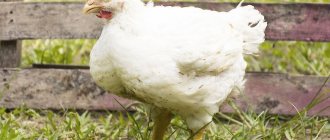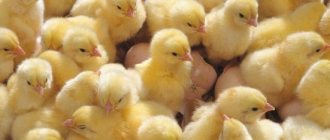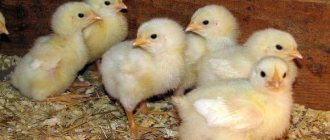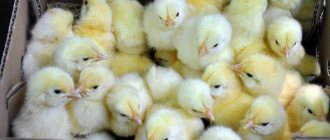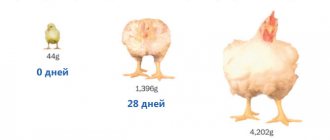Fast transfer
Icon translate
Fast transfer
Icon translate
Fast transfer
Icon translate
We discuss how to keep chickens at home, what to consider when organizing the feeding process.
A home mini-poultry farm is the key to the health of the whole family. Environmentally friendly, natural products are of particular value for children and people weakened by chronic diseases. We discuss how to keep chickens at home, what to consider when organizing the feeding process.
Raising Chickens: Basics
- The most optimal solution for day-old chicks is to raise them under a hen, which can provide them with the required level of heating and comfort.
- If the chickens are kept at the wrong temperature after the incubator, there is a high probability of their death: in search of warmth, the chickens can crush each other.
- Too cold conditions cause poor appetite, and excessive heat causes thirst and complete lack of movement in chickens.
- If the temperature regime has been ensured correctly, the chickens will eat well and actively move around the entire perimeter of the cage, which will allow them to quickly gain strength.
- For day-old chicks that will be raised in artificial conditions, it is worthwhile to arrange a special fenced and heated place in advance. For these purposes, a wooden box, lined with insulation on the inside, or a cardboard box, the height of which is 40-60 cm, is perfect.
- The box or box in which the chickens will be located must be installed not on the floor, but on some surface. The interior space should be covered with thick paper, which will make the bottom warmer. Once the chicks are 4-7 days old, the paper can be replaced with bedding.
raising chickens
Meals on the first day
The traditional food for day-old chicks is a hard-boiled chicken egg. But recent scientific research in the field of poultry farming proves that this is completely wrong.
Firstly, the chick’s stomach, with such a food consistency, does not receive the proper load, which leads to dysfunction of the muscles of the digestive organs. Secondly, the body is oversaturated with easily digestible proteins and fats, which negatively affects the absorption of B vitamins, which ensure the formation of the nervous system.
On the first day, experts advise adding semolina or corn grits to a finely chopped boiled egg.
Despite many years of experience in successfully feeding day-old chicks at home with boiled chicken eggs, the opinion of experts should not be ignored. Perhaps following their recommendations will help produce more viable and healthy livestock.
What should the lighting be like?
For the first 10 days, chickens should be kept in a 24-hour day of light after the incubator. As the birds grow older, the time will need to be gradually reduced to 9-10 hours, until the chickens reach 2 months of age. It will be necessary to adhere to this light regime until the young chickens begin to lay eggs.
For lighting, you should use electric lamps with a power per 1 sq. m. floor should be 3-4 W.
What to choose: a hen or an incubator?
This can be done in two ways - under the hen and in the incubator.
Advantages and disadvantages of raising chicks under a broody hen:
Advantages and disadvantages of hatching in an incubator:
How to raise chickens under a broody hen?
Even though it is a natural process for a hen to hatch eggs, there are certain rules that must be followed when hatching chicks.
- They select a hen that is ready to hatch chicks.
A hen prone to nesting does not leave the nest, remaining in it overnight. Before placing eggs under the bird, carefully observe its habits - the hen should “sit down”. In this case, when trying to get the bird out of the nest, it begins to cluck heart-rendingly and tries to return to it. - For a while, the mother is separated from the rest of the chickens.
For this purpose, use the darkest corner of the chicken coop or cage. Depending on the weight of the chicken, from 11 to 20 eggs are rolled under it. All this time, the chicken is fed, being forcefully removed from the nest twice a day. This helps avoid death from exhaustion. It is necessary to water the bird. - After hatching, the babies are immediately taken away from the hen and transplanted into a pre-prepared box
. If this is not done, the hen may leave the nest and go for a walk with the brood (later she will not return to it). The family is reunited after the entire brood has hatched.
How to use an incubator to raise chickens at home?
Modern incubators are divided into manual, mechanical and automatic.
In the first case, each egg is turned over manually. In the second, the entire bookmark is turned over at the same time.
The maintenance of optimal hatching conditions inside the incubator is controlled and adjusted by the owner.
In the third case, the eggs are turned automatically (every hour), and the temperature remains the same throughout the entire incubation (it is set when the eggs are laid).
When the temperature changes, the device starts beeping
.
In good conditions, most of them will turn into healthy chickens and roosters; in bad conditions, all of them may die.
Room
The poultry house is cleaned daily. This makes it possible to exclude the appearance of pathogenic microorganisms in it that can harm the livestock.
Do the same with the bedding. It must be dry and clean, and therefore it is changed regularly. If possible, young birds are kept separately from adult birds.
This is necessary so that the chicks develop harmoniously - eat well, run, walk. The number of livestock is selected depending on the area of the premises (the brood should not be crowded).
Attention!
You should not keep your bird behind closed doors at all times. In the second month of life, young animals should walk outside every day - sunbathing and green food are required for the normal functioning of the birds' digestive system.
Length of daylight
Lighting plays a vital role in the process of raising young animals. The length of daylight hours is selected depending on how much time has passed since the chicks hatched.
Until the young animals reach four months, it is maintained at 18 hours, then reduced to 10. These recommendations are followed regardless of whether broilers or layers are raised.
To create optimal conditions, additional lighting is used.
Temperature
At first it is maintained at +32 degrees.
When the chicks reach six days of age, it is reduced to +28 °C, when they reach ten days - to +25 °C, when they reach twenty days - to +20...+24 °C.
Maintaining the specified temperatures is ensured with the help of lighting lamps and heaters of one type or another.
What should be the optimal heating?
The first thing that should be considered before keeping chickens after an incubator is optimal heating, which can be provided in several ways:
- The first option involves the use of an electric lamp, the power of which is in the range of 100-150 W, and reflectors with a metal mesh. If the chickens are in a box or box, then it is worth installing 1-2 reflectors on top of it, into which ordinary incandescent light bulbs are screwed in place of the heating elements (their power should be 40-60 W).
- A more energy-saving option would be a flask filled with hot water or a heating pad, pre-wrapped in woolen cloth or ordinary cotton wool. But when using this heating method, it will be necessary to replace the water in a timely manner. However, this option is the most suitable for chickens from an incubator, which eagerly flock near such a pleasant source of heat.
Conclusion
In order to raise full-fledged chickens, experts recommend following the instructions for caring for the offspring. Healthy food and equipped housing are mandatory living conditions. But an equally important point is proper heating. Observe the behavior of your students more often. Their well-being is negatively affected by both excessive heat and cold. Monitor the air temperature in the poultry house and distribute it according to the age of the chickens. This is the only way you can achieve 100% survival of the individual and raise a wonderful meat breed. Please yourself and your customers.
For information on what temperature should be for keeping broilers, see the following video.
What should the temperature be?
The optimal temperature for keeping chickens after the incubator will help raise them healthy, which is why this issue should be taken especially seriously. To control it, you will need to install a thermometer at a height of 0.5 m from the floor.
As the young animals grow, the temperature will decrease:
- from 29 to 33°C – the first 5 days;
- 26°C – from 5 days to 10 days (inclusive) of age;
- every next 7 days the temperature should decrease by 3-4°C (the temperature should be lowered until it reaches 16-18°C).
Disease Prevention
It's no secret that raising poultry rarely occurs without loss of livestock. But, contrary to popular belief, most of the “waste” occurs not due to infectious diseases, but due to the owners’ banal failure to comply with sanitary rules for keeping young chickens. To minimize the risk of death of babies under one month of age, it is necessary:
- change litter daily;
- Thoroughly wash the drinking bowl and feeder twice a day;
- ventilate the brooder several times a day;
- do not allow water to splash to avoid increasing humidity;
- remove uneaten food residues from feeders (especially if it contains fermented milk components);
- periodically (a couple of times a week) give babies a weak solution of potassium permanganate;
- Regularly (every 10-15 days) completely clean and disinfect the brooder.
Of course, we should not forget that chicks need preventive vaccinations.
In addition, food must be enriched with ready-made mineral and vitamin supplements in accordance with the age of the babies. Compliance with these requirements, coupled with proper organization of feeding, will allow owners to reduce the cost of veterinary support and avoid unpleasant problems, and the chickens will grow healthy and strong.
How and what should chickens eat?
For optimal growth of chickens, you will need to organize a special diet for them. However, not everyone knows what to feed chickens after the incubator, which leads to various diseases and poor growth of the young.
The chicken diet should look like this:
- Protein feed - milk (dry), whey, boiled peas, fish and meat waste, sunflower, cottage cheese. These products are introduced after the 5th day of the chicken’s life.
- Grain feed - corn, barley, wheat, rye, oats.
- Various mineral additives - chalk, shells, charcoal, ash, salt. They should be given starting from the 5th day of life of young animals.
- A variety of vitamins - pine needles, pumpkin, carrots, hay.
- Greens - sorrel leaves, clover, nettle, wood lice, dandelion leaves.
Ready-made mixed feeds called “starter” feeds are very convenient. They contain a complete set of essential nutrients and vitamins, so the brood can be fed only with ready-made food, gradually introducing ground grain.
As for the number of feedings throughout the day, it should look like this:
- 1 week – 8 feedings;
- 2 week – 6 feedings;
- Week 3 – 4 feedings.
Chicks must have fresh water in a special drinking bowl, which prevents their feet from getting wet and, as a result, colds. A drinking bowl is easy to buy at the market or in a store; it fits onto a glass jar of the required size.
Walking the young animals
You can start releasing chickens outside at two weeks of age, in dry, warm weather.
- Initially, I release the chicks for 30 minutes, then the walking time is gradually increased.
- The area for chickens to walk needs to be specially prepared.
- It should be protected from the wind and partially equipped with a canopy so that the chicks can hide from rain or direct sunlight.
When raising chickens for meat, poultry farmers prefer to limit their movement to speed up weight gain, but broiler chickens also benefit from ultraviolet light and fresh air. In this case, the cages for raising chickens are simply taken outside in warm weather.
How to walk chickens?
Chicks should be taken out for walks from the 5th day of their life. Sunlight can have a positive effect on the body of young animals, while activating the production of vitamin D, which eliminates the likelihood of developing rickets in chicks. The fence where the chicks are located should have enough sun, as well as a shaded area.
Such walks should only be taken on sunny days and calm weather. If it is too damp and cold outside, then young animals should be kept indoors until they are 2 months old.
Before raising chickens after an incubator, it is imperative to follow all the recommendations listed above. Only with competent and timely care will it be possible to raise truly strong and healthy chicks.
Growth control
To check the effectiveness of your feeding regimen, you need to periodically weigh the chickens and compare their weights with a tabular standard for that breed. This picture shows a table for different breeds. So a laying chick that has received good care and feeding should weigh 60 grams by the age of ten days.
Table of weight of chickens and chickens by day
Over the next 10 days, it should practically double its mass. The established weight of laying chickens according to the table is an indicator of the correctness of maintenance. If the mass of chicks is deviated in a smaller direction, this means that mistakes have been made that need to be corrected immediately, because poor development of laying hens in childhood will affect their productivity in adulthood. Therefore, the count here goes day by day, and it is impossible to delay identifying the reasons.
